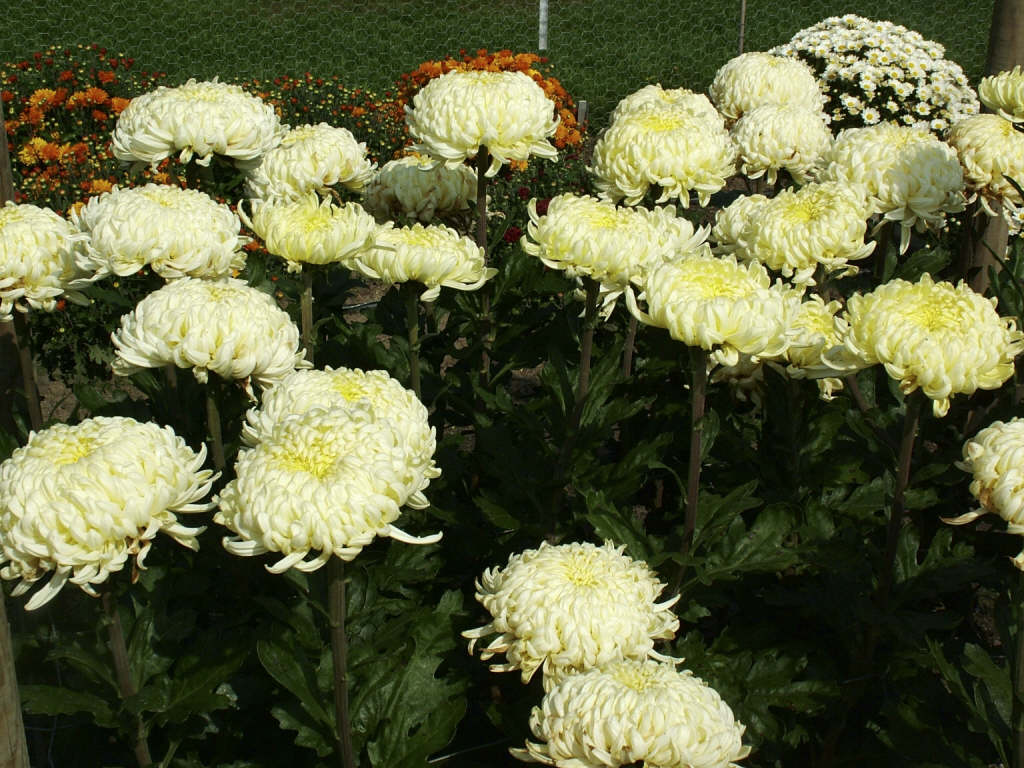Size
Ultimate height
1–1.5 metresTime to ultimate height
1–2 yearsUltimate spread
0.1–0.5 metresGrowing conditions
Moisture
Moist but well–drainedpH
Acid, Alkaline, NeutralColour & scent
| Stem | Flower | Foliage | Fruit | |
| Spring | Green | |||
|---|---|---|---|---|
| Summer | Green | |||
| Autumn | Yellow | Green | ||
| Winter |
Position
- Full sun
Aspect
South–facing or East–facing
Exposure
Sheltered Hardiness
H3Botanical details
- Family
- Asteraceae
- Native to GB / Ireland
- No
- Foliage
- Deciduous
- Habit
- Bushy
- Potentially harmful
- Skin allergen. Wear gloves and other protective equipment when handling
- Genus
Chrysanthemum are erect woody-based perennials with aromatic, pinnately lobed leaves and flowerheads of diverse form, from late summer to late autumn
- Name status
Accepted
- Horticultural Group
- Medium-flowered, Early Flowering Outdoor Intermediate chrysanthemums bear fully double flowerheads in late summer and early autumn
How to grow
Cultivation
Grow in a sheltered site in full sun in fertile well-drained soil, enriched with organic matter and general purpose fertiliser. Water freely in dry weather. Pinching out the growing tip when the plants are 15-20cm tall to encourage free flowering bushy plants. Staking is usually required. There is no need to deadhead. In mild areas leave in the ground protected by a thick mulch. Elsewhere lift the crowns and store in a greenhouse, raising fresh plants from these each year
Propagation
Propagate by softwood cuttings taken in spring from shoots from stored stools
Suggested planting locations and garden types
- Cottage and informal garden
- Cut flowers
- Flower borders and beds
Pruning
Cut back to near ground level in the autumn, before lifting and storing for the winter
Pests
May be susceptible to aphids and leaf miners which are common pests. Leaf and bud eelworms can damage stock that has not been heat-treated. Earwigs sometimes damage blooms. Capsid bug and glasshouse red spider mite are occasional pests
Diseases
May be susceptible to glasshouse grey mould, powdery mildews and chrysanthemum white rust
Get involved
The Royal Horticultural Society is the UK’s leading gardening charity. We aim to enrich everyone’s life through plants, and make the UK a greener and more beautiful place.

